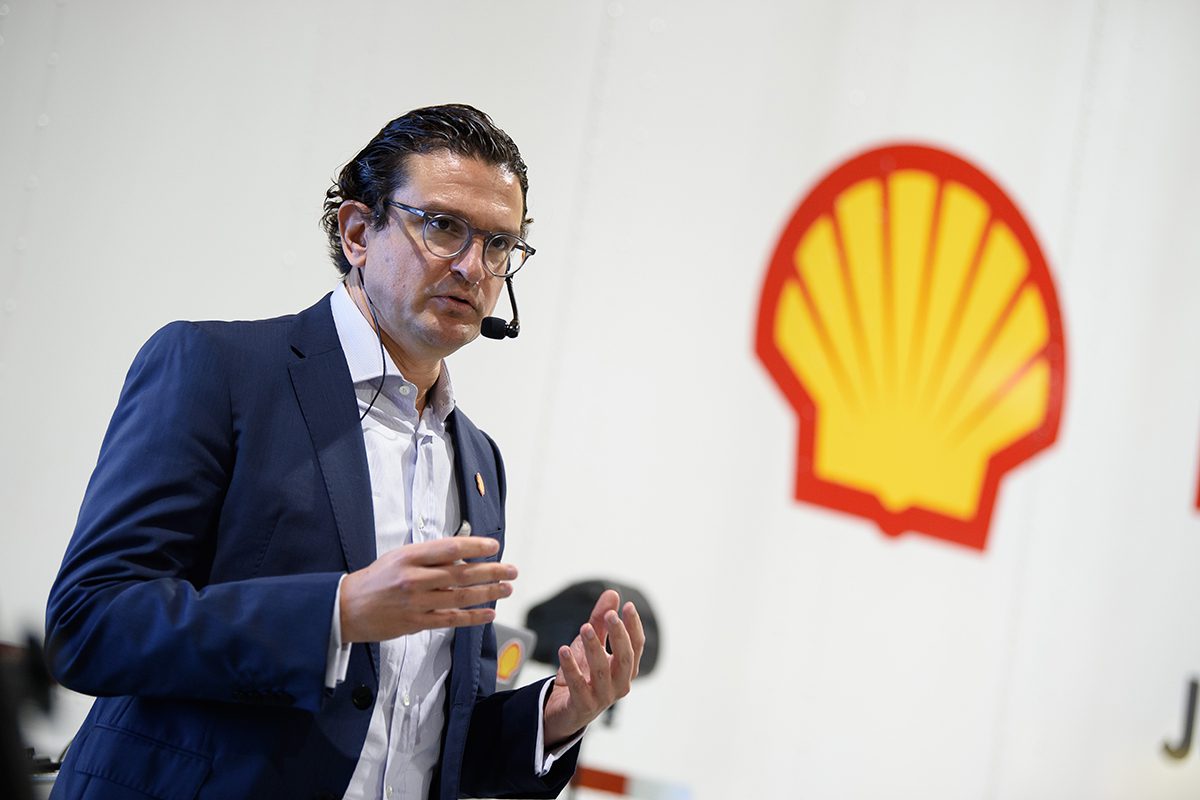Shell’s Starship 2.0 demonstration truck made its way to the ACT Expo hall today, along with the announcement that the program has exceeded fuel economy and efficiency results with the Class 8 truck, compared to its initial 2018 Starship program. The program demonstrates how the use of energy-efficient technologies can improve fuel economy and cut CO2 emissions substantially while driving a heavy-duty commercial truck in real-world conditions.
The truck was designed to draw together various technologies in a single vehicle crafted to optimize performance and efficiency. Following the initial program in 2018, the Shell Lubricants Solutions and Shell Technology teams worked together to pair the learnings from the first run with recent advancements in technology to develop the Shell Starship 2.0 truck. The new truck features a new chassis and drivetrain, along with new safety and fuel-efficient upgrades, while maintaining the custom-built body from the original truck.
Shell Starship 2.0 made a cross-country drive across the U.S. from San Diego to Jacksonville, following the same route as its predecessor. A second, shorter 400-mile evaluation run was also conducted to provide additional data about its freight ton efficiency and fuel economy benefits. Both trips were monitored and verified by the North American Council for Freight Efficiency (NACFE).
“With increasing efforts to decarbonize road freight, we saw an opportunity to further demonstrate that the use of today’s efficient technologies can offer significant benefits to fleets,” said Jeff Priborsky, global marketing manager for the on-highway fleet sector at Shell Lubricant Solutions. “Understanding that not all fleets run fully loaded from coast-to-coast, we felt it was important to conduct a variety of tests to provide additional data that can show how trucking efficiencies work in different conditions, in order to provide tangible benefits to the freight transport industry.”
Shell Starship 2.0 reportedly achieved 254 ton-miles per gallon for freight ton efficiency – 3.5 times higher than the North America average.
Shell Starship 2.0 reportedly achieved 254 ton-miles per gallon for freight ton efficiency – 3.5 times higher than the North America average freight ton efficiency for trucks, which is estimated at 72 ton-miles per gallon by NACFE. Freight ton efficiency is a relevant statistic for judging the energy intensity associated with moving cargo from point A to point B since it combines the weight of cargo being moved with the amount of fuel consumed.
According to Shell, its Starship 2.0 achieved 10.8 mpg on its cross-country run as compared to the 8.94 achieved by Starship 1.0 and the 6.4 mpg North American fleet average. These improvements were achieved while carrying 18% more payload — from 39,900 pounds in 2018 to 47,100 pounds this year.
The 400-mile short haul evaluation was completed in North Carolina with a cargo weight of 17.5 tons, which was chosen to reflect more typical payload commonly used by many fleets. Shell reports that the average fuel economy obtained was 12 mpg and the freight ton efficiency value was 210 ton-miles per gallon.
Starship 2.0 achieved 10.8 mpg on its cross-country run as compared to the 8.94 achieved by Starship 1.0.
While both values are direct consequences of the reduction in cargo mass, these are significant numbers when compared to the U.S. average of 6.4 mpg and 72 ton-miles per gallon. The fuel mileage is almost double the U.S. average and the ton-miles is more than triple.
“The efficiency testing with different payloads and miles driven demonstrate that efficient technologies have significant benefits for long-haul and shorter regional-haul applications,” said Robert Mainwaring, Technology Manager for Innovation, Shell Lubricants. “Fleets and owner-operators can evaluate which technologies are most beneficial for them and pursue them today to find significant fuel savings and carbon emissions reductions.”
Shell noted that the path to a low-carbon energy future will require a range of solutions, with Starship 2.0 demonstrating what is possible using currently available efficient technologies and lubricants.



